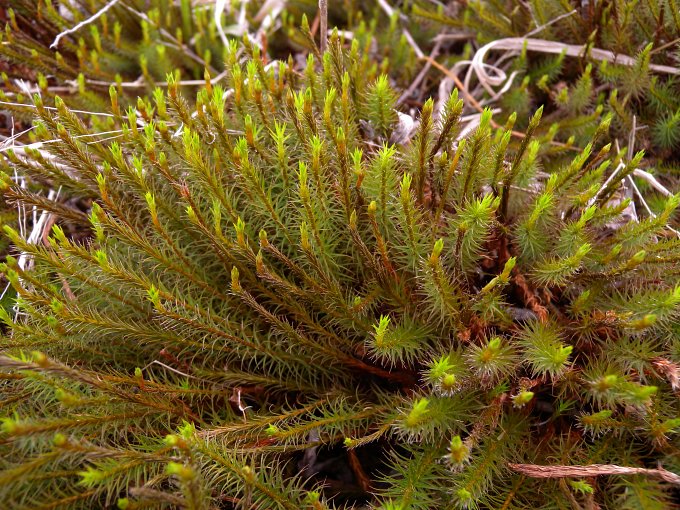
The midrib of each leaf is obscured by fine adjacent ridges (lamellae) that cover the entire area of the upper leave surface, except near its margins. Viewed lengthwise under high magnification, these ridges are finely crenate (crenulate). When a cross-section of these ridges is examined under high magnification, their uppermost leaf cells are notched, rather than truncate or rounded. These ridges make the leaves of this moss opaque and dark green. Depending on their age or weather conditions, sometimes these leaves are tinted brown or red. The upper leaf surface is slightly concave and hairless, while the lower leaf surface is convex and hairless. This moss is dioicous with egg-bearing female plants and sperm-bearing male plants. The sperm of male plants are contained in splash-cups at their apices. Each yellowish or reddish splash-cup consists of a rosette of deltate to lanceolate leaves and the organs containing the sperm. The sperm are spread in part by raindrop logistics. When cross-fertilization occurs, an individual plant produces a solitary spore-bearing capsule on a slender stalk about 2–3½" (5-9 cm.) long. This typically happens during the summer.
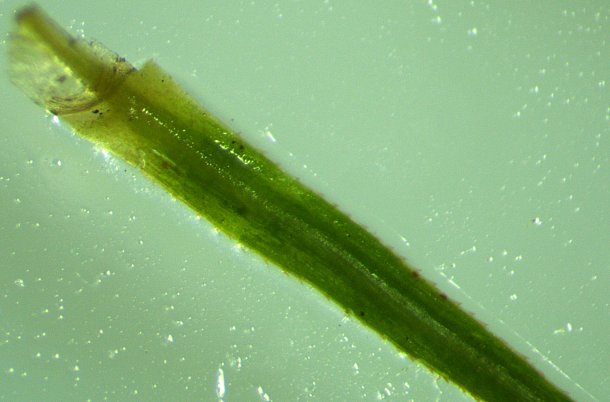
The slender stalk (seta) is pale yellow to red, terete, hairless, and more or less erect. The spore-bearing capsule is 3-6 mm. long, 4-angled, slightly longer than it is across, and reddish to brown. The lid (operculum) at the apex of the capsule has a flat round base and a narrow short beak. During an early stage of development, both the capsule and lid are covered with a long-beaked hood (calyptrum); this hood is white to pale yellow, membranous, and conspicuously hairy. The hood soon falls to the ground. When the lid falls off too, a white round membrane becomes visible that covers most of the mouth of the capsule. Eventually, it shrivels and the tiny spores (about 5-10 microns across) are released to the wind. This moss has fibrous rhizoids that extend into the ground up to 1' deep. These rhizoids often produce clonal offsets, resulting in dense colonies of plants.
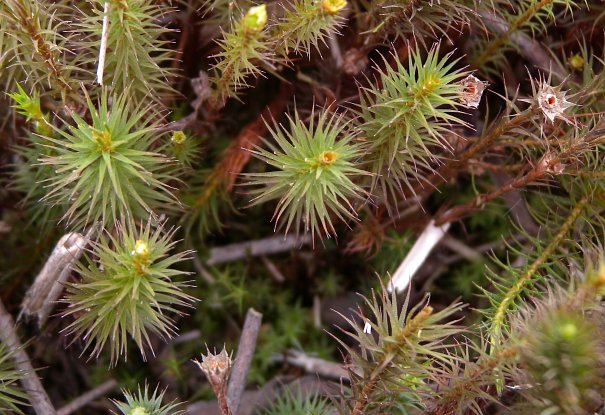
Cultivation: The preference is full sun to partial sun, moist to mesic conditions, and acidic sterile soil containing sand, gravel, or soil-covered rocky material (e.g., sandstone). This large moss is more tolerant of sunlight, dry conditions, and exposure to wind than most mosses. The size of this moss can be highly variable, depending primarily on moisture levels, humidity, and age.
Range & Habitat: The Common Haircap Moss is occasional in most areas of Illinois (see Distribution Map). It is widely distributed in North America, Eurasia, and Australia. In Illinois, habitats include thinly wooded bluff tops, wooded slopes, sandy woods, sandy savannas, pine groves, woodland borders, hill prairies, sand prairies, sandy meadows, sandy ground along creeks, hummocks in swampy woods, hummocks in tamarack bogs and open peat bogs, soil-covered sandstone ledges, soil-covered areas along sandstone outcrops, and sandy abandoned fields. Common Haircap Moss can be found in moderately disturbed to high quality natural areas.
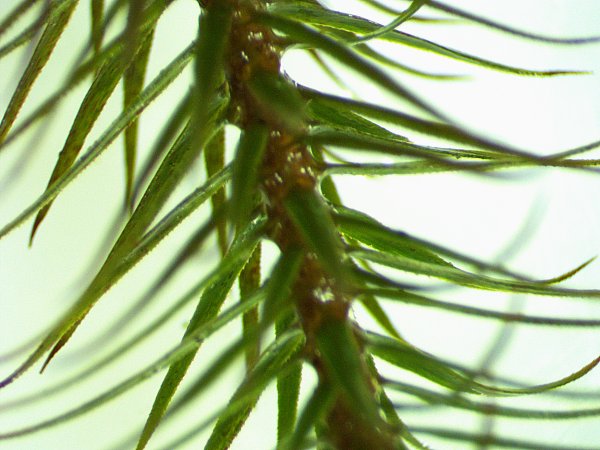
Faunal Associations: A moss aphid, Myzodium modestus, feeds on Polytrichum mosses and other mosses (Blackman & Eastop, 2013). The American Robin has been observed to use pieces of Common Haircap Moss to construct its nests (Breil & Moyle, 1976). Because this is the largest moss in Illinois and it often forms sizable colonies, this moss provides protective cover for small vertebrate animals and many invertebrate animals (e.g., insects).
Photographic Location: A moist sandy meadow near a sandy swamp at the Heron Park Conservation Area in Vermilion County, Illinois. Close-up photos were taken with a microscope. Some of the photographed plants were 6" long or longer; they are examples of the typical variety, Polytrichum commune commune. The other variety of this moss, Polytrichum commune perigoniale, is a much smaller plant up to 3" tall. It is rarely encountered in Illinois.
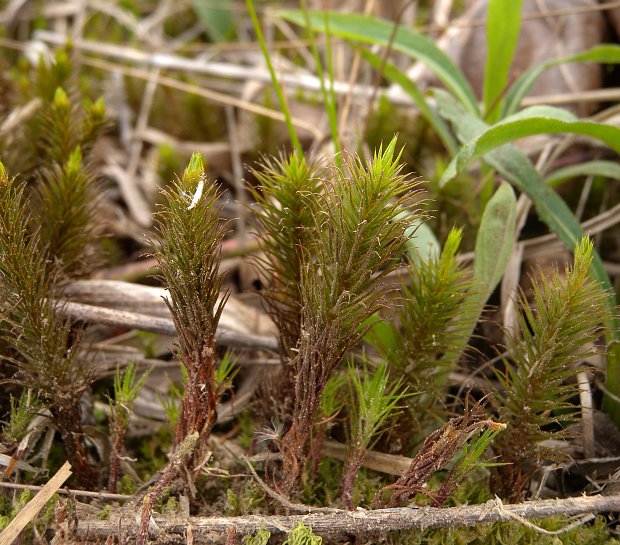
Comments: This is one of the showiest mosses. Common Haircap Moss can often be distinguished from other mosses by its large size. Most Polytrichum spp. (Haircap Mosses) are 6" or less in height. Mosses from other genera are even smaller. The common name of these mosses refers to the hairy hoods (calyptrae) that cover their spore-capsules. Small plants of the Common Haircap Moss can be difficult to distinguish from other Haircap Mosses that are found in Illinois. This moss can be distinguished from these other species by one or more of the following characteristics: 1) its leaves lack awns at their tips, 2) the margins of its leaves are toothed rather than toothless, 3) the uppermost cells of the fine ridges (lamellae) of its leaves are notched, rather than truncate or rounded, when they are viewed in cross-section (requires high magnification), 4) the fine ridges of its leaves (lamellae) are slightly crenulate when they are viewed lengthwise (requires high magnification), 5) its spore-capsules are 4-angled and short-rectangular, rather than cylindrical or long-rectangular, and 6) the lids of its spore capsules have flat round bases with short narrow beaks, rather than a conical shape or a flat rounded base with a long beak.